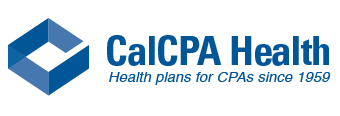Opioid Epidemic Amongst CPA’s
Like many, I had originally assumed that the CalCPA community was insulated from the opioid epidemic. Although data shows that opioid addiction is below national averages in California and the CPA community, it still exists in disturbing numbers.
Estimates are that only about one in five opioid addicts are in treatment. Vermont, ground zero for the epidemic has over 1.5% of their adult population in treatment. At CalCPA Health we estimate about 1.5% of our members are addicted. Although below averages, it is still a big number.
CalCPA opioid addicts are not your typical skid-row users. Through no fault of their own, most get hooked by pain treatments from surgeries, degenerative joint disease or dental procedures.
I recently reported to CalCPA Council what we are doing to address this epidemic in our own backyard. CalCPA Health has multiple programs in place to prevent, identify and treat opioid addiction. These operate confidentially behind the scenes, invisible to everyone.
Identifying an opioid addict is one thing. Getting them into treatment is another. Given the sensitivity of the problem, I was at first apprehensive of CalCPA Health initiating a reach-out help offer (“What if we get it wrong?”). But these interactions are handled by experienced medical professionals and as one of the doctors in the program explains: the first step is letting the addict know that someone else knows they are addicted and we are available to help. Most working addicts do not think anyone else knows. And they don’t know how or where to seek help without putting their secret at risk with their employer and/or family.
Our identification and treatment programs have been in place for a couple years. Recently, CalCPA Health initiated a prevention program that we hope will reduce the number of members getting addicted in the first place.
Here at CalCPA Health, our members’ well being is our top concern. Please know that if you or someone you know, may need help with a possible opioid addiction; by contacting the doctor that originally authorized the medication, they are typically in the best position to guide someone to receive assistance.
Ron Lang, CEO
CalCPA Health
**************
To give you a perspective on this epidemic, according the the Health and Human Services:
- Approximately 10.3 million people aged 12 or older misused opioids in 2018
- 2.0 million people had an opioid use disorder in 2018
- On average, 130 Americans die every day from an opioid overdose
The Centers for Disease Control and Prevention (CDC) breaks the opioid crisis into three waves:
The first wave was in the 1990s when the prescribing of opioids (natural and semi-synthetic opioids and methadone) began to increase. The second wave started in 2010 with an increase in heroin overdosing. Finally, the third wave, which we are still in the middle of, began in 2013 with a significant increase in overdose deaths due to synthetic opioids.

